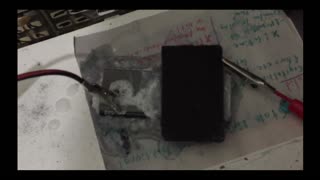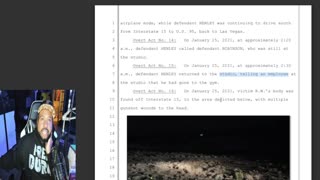Premium Only Content

Over Unity Explained
Welcome to my channel where I would like to talk to you about over unity, and how it is widely misunderstood by the scientific community. I get very frustrated when the first thing they do is accuse me of breaking the rules of thermodynamics when discussing over unity. They tell us that energy cannot be created out of nothing and that you can't take energy and input electricity energy and get more output from it from the same system. They say, "Well, over unity is out of the question. Don't even look into it. You're just digging yourself a rabbit hole. Science debunked this a long time ago." But this is a very bad way of looking at it, and here's why.
What they don't seem to understand is that when we're building over unity systems, we don't just play with one kind of energy. We introduce multiple sources in the system, and by doing that, we're not breaking any rules of thermodynamics whatsoever. Tom Bearden sort of had a point with this, but he tried to explain it in a way that seemed to complicate things. So, let me simplify it for you.
We want to create what we're interested in, which is electrical energy net gains. As I said earlier, you can't create energy out of nothing, so we're going to have to provide a trigger. This trigger could come from a variety of sources. For example, if you're lucky enough to live by a river, you could use a hydro wheel. But if not, there are several other mechanisms that we can use.
Here's a simple concept that uses an input trigger of 10 volts, which pulses 25 milliamps at one percent duty cycle. We're introducing multiple systems, such as magnetic and resonance, which, when triggered on their own, create another system of energies that are manipulatable. We increase the amplitude, use feedback, and various methods to introduce more energy into the system. We're not taking something out of nothing; we're providing a trigger, creating a reaction, and manipulating external energy systems.
At every event, we're creating a new source of energy into the system with resonance and amplification. Then we find a way to induce it back into an electrical form, and that's your inducer. Another system that transduces this back into an electrical form of energy that we're looking for. Now, all of a sudden, the output comes out at 20 volts, 100 milliamps because of the interaction with the various systems that would be at play that we wouldn't have been able to tap into without clever mechanisms such as the systems I've described in other videos.
Some people might argue for another type of system, such as Tom Bearden's vacuum energy or quantum physics. But these are unproven theories, and it's up to you whether you consider them in your personal advancements.
In conclusion, the idea of over unity is not a myth. We just need to look at it in a different way, incorporating multiple energy systems into the equation. We're not breaking the rules of thermodynamics; we're just manipulating them to our advantage. So, let's explore and experiment with over unity and not dismiss it as impossible.
I also give you a working trigger voltage example as some people are asking for less theory and more demonstration so I tried to make it into a two for one :)
Forum:
http://typeright.social/forum
Please Help Support My Research: https://youtu.be/pYXETBB40j0
-
 6:21
6:21
Joel Lagace
9 months ago $0.04 earnedHigh Power Crystal Cell
178 -
 LIVE
LIVE
Akademiks
2 hours agoDay 1/30. Big U 43 Count Indictment. Ye Interview? YB Home. Yella Beezy Bails out. Durk + Nav drop
5,083 watching -
 2:34:48
2:34:48
Laura Loomer
3 hours agoEP112: MS-13 EVICTED By President Trump
6.08K12 -
 LIVE
LIVE
SynthTrax & DJ Cheezus Livestreams
1 day agoFriday Night Synthwave 80s 90s Electronica and more DJ MIX Livestream BLACKLIGHT Edition
448 watching -
 LIVE
LIVE
Toolman Tim
1 hour agoCommunity Gaming Night!! | Among Us
280 watching -
 LIVE
LIVE
GamerGril
1 hour agoMost Dangerous Gril This Side Of The Mississippi
175 watching -
 LIVE
LIVE
ZWOGs
1 hour ago🔴LIVE IN 1440p! - FiveM Fridays!! GTAV RP!! | Dwindle Digby | - Come Hang Out!
55 watching -
 2:05:43
2:05:43
TimcastIRL
3 hours agoTrump Admin Notifies Congress USAID Is CLOSED, Fires EVERYONE, ITS OVER w/Dan Holloway | Timcast IRL
172K76 -
 DVR
DVR
Man in America
7 hours agoClear Skies Coming? States Rally to Ban Geoengineering as RFK Jr. Calls Out ‘Toxic Dousing'
13.4K17 -
 LIVE
LIVE
BlackDiamondGunsandGear
7 hours agoThe time is NOW! / EDC / Preps / Load Out
79 watching